Advertisements
Advertisements
Question
Given below is a set of six experimental set-ups (A-F), kept in this state for about 24 hours.
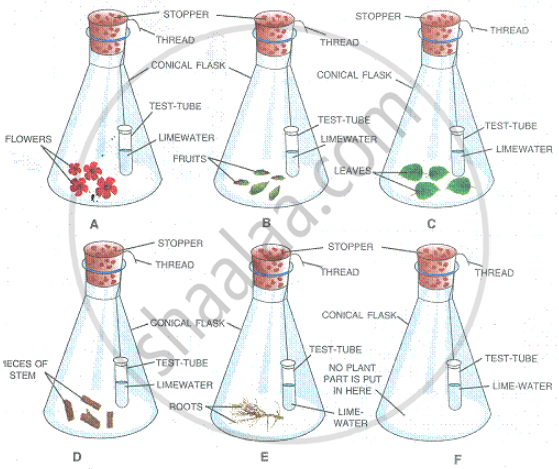
What is the purpose of keeping a test-tube containing limewater in each flask?
Solution
Limewater absorbs CO2 present in the flasks. If CO2 is produced, limewater turns milky.
APPEARS IN
RELATED QUESTIONS
Describe one experiment you would perform to demonstrate the following phenomena: The germinating seeds to give out carbon dioxide.
Describe one experiment each of you would perform to demonstrate the following phenomena: The germinating seeds can respire even in a total absence of air.
The following diagram refers to an apparatus which is used to demonstrate a physiological process:

What is the purpose of keeping potassium hydroxide solution in test tubes X and Y?
Given below is a set of six experimental set-ups (A-F), kept in this state for about 24 hours.
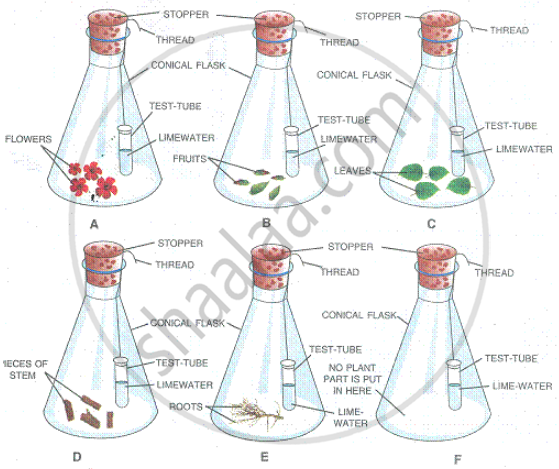
In which tube/tubes the limewater will turn milky?
Given below is a set of six experimental set-ups (A-F), kept in this state for about 24 hours.
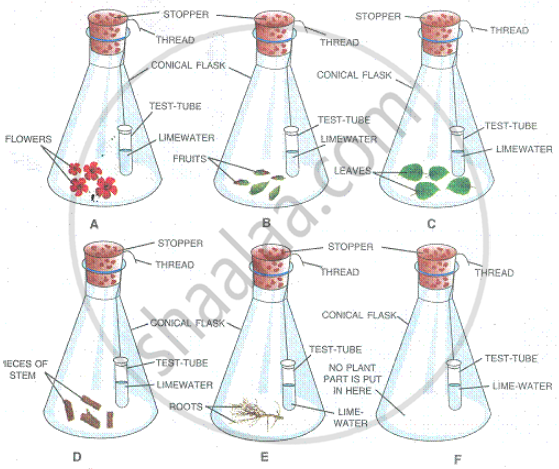
What is the purpose of the set-up F?
In order to study and prove a particular physiological process in plants, the following experiment was set up. Study the same and then answer the question that follows:
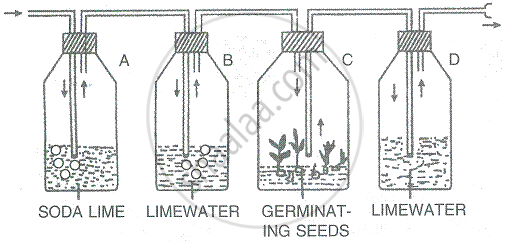
Name the physiological process being studied.
In order to study and prove a particular physiological process in plants, the following experiment was set up. Study the same and then answer the question that follow:

What change would you expect to observe in bottle 'D'?
In order to study and prove a particular physiological process in plants, the following experiment was set up. Study the same and then answer the question that follow:
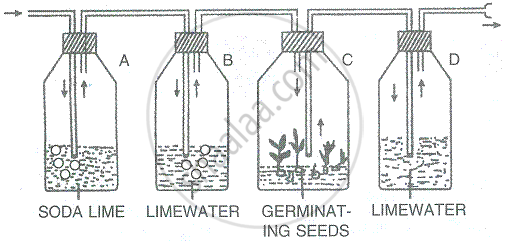
In order to obtain accurate results, the bottle 'C' should be covered with black cloth. Why?
The given fig. refers to an apparatus which is used to demonstrate a physiological process:
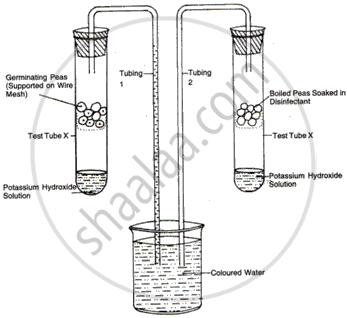
(a) What is the purpose of keeping potassium hydroxide solution in test tubes X and Y?
(b) What is the purpose of keeping boiled peas soaked in disinfectant in test tube Y?
(c) Why has coloured water risen in tube 1?
(d) Name the biological process which causes the above rise.
(e) Define the biological process shown in the experiment.
Name the following:
The solution that turns milky when carbon dioxide is passed through that solution.
